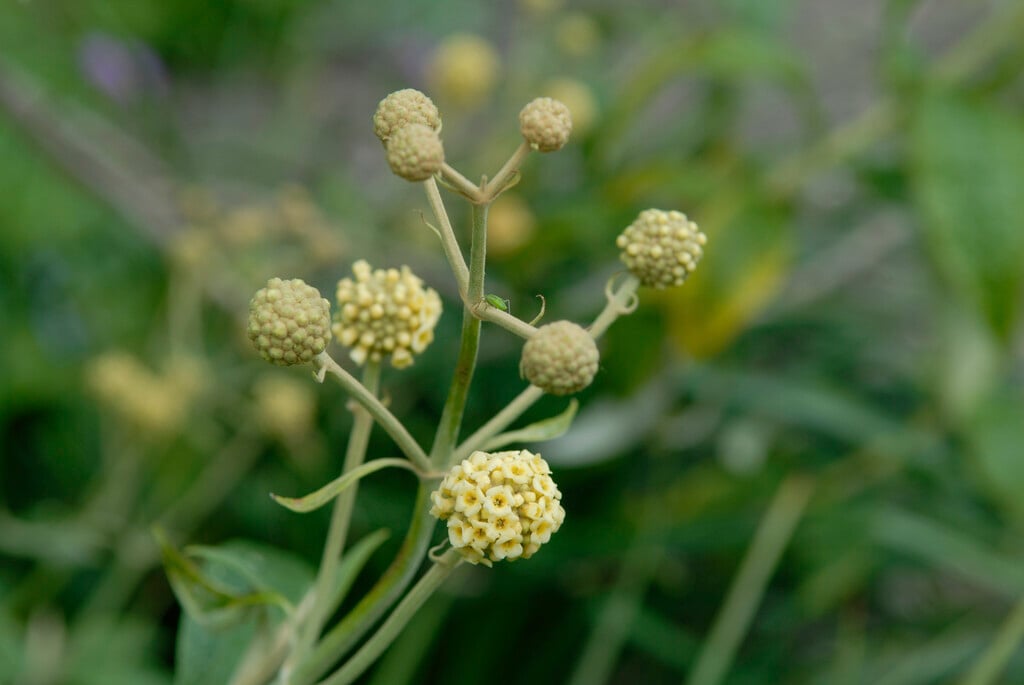Buddleja globosa 'Lemon Ball'
orange ball tree 'Lemon Ball'
A deciduous shrub, to around 2m high, with strong stems and long, lance-shaped dark green leaves with deeply impressed veins. Rounded clusters of small yellow flowers are produced in late spring and early summer

Buy this plant
Size
Ultimate height
1.5–2.5 metresTime to ultimate height
5–10 yearsUltimate spread
1.5–2.5 metresGrowing conditions
Moisture
Moist but well–drained, Well–drainedpH
Acid, Alkaline, NeutralColour & scent
| Stem | Flower | Foliage | Fruit | |
| Spring | Yellow | Green | ||
|---|---|---|---|---|
| Summer | Yellow | Green | ||
| Autumn | Green | |||
| Winter |
Position
- Full sun
- Partial shade
Aspect
East–facing or South–facing or West–facing
Exposure
Sheltered Hardiness
H5Botanical details
- Family
- Scrophulariaceae
- Native to GB / Ireland
- No
- Foliage
- Deciduous
- Habit
- Bushy
- Genus
Buddleja can be evergreen or deciduous shrubs, occasionally trees or scrambling climbers with simple leaves and panicles of small, tubular fragrant flowers
- Name status
Accepted
How to grow
Cultivation
Thrives in a sunny, well-drained situation, though will tolerate partial shade. Protect from strong winds and excess winter wet. See buddleja cultivation for more detailed advice
Propagation
Propagate by semi-hardwood cuttings in summer
Suggested planting locations and garden types
- City and courtyard gardens
- Cottage and informal garden
- Wildlife gardens
- Flower borders and beds
- Wall side borders
Pruning
Minimal pruning required, see pruning group 2
Pests
May be susceptible to aphids, capsid bugs, caterpillars, earwigs, figwort weevils, glasshouse red spider mite, leaf and bud eelworm, and mullein moth
Diseases
May be susceptible to honey fungus, fungal leaf spot, and virus diseases
Get involved
The Royal Horticultural Society is the UK’s leading gardening charity. We aim to enrich everyone’s life through plants, and make the UK a greener and more beautiful place.